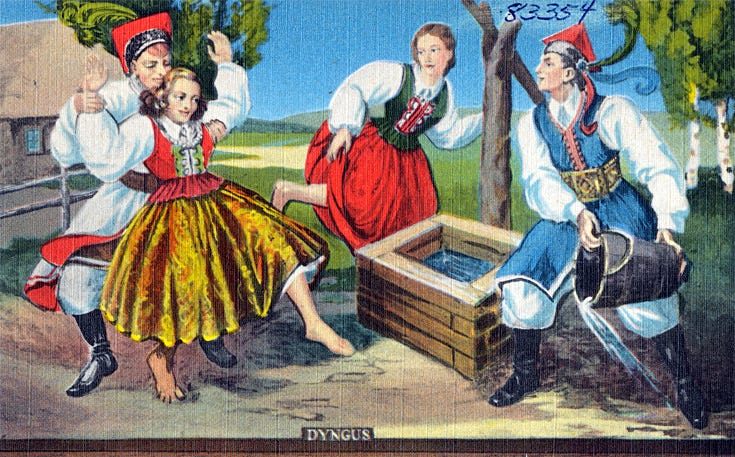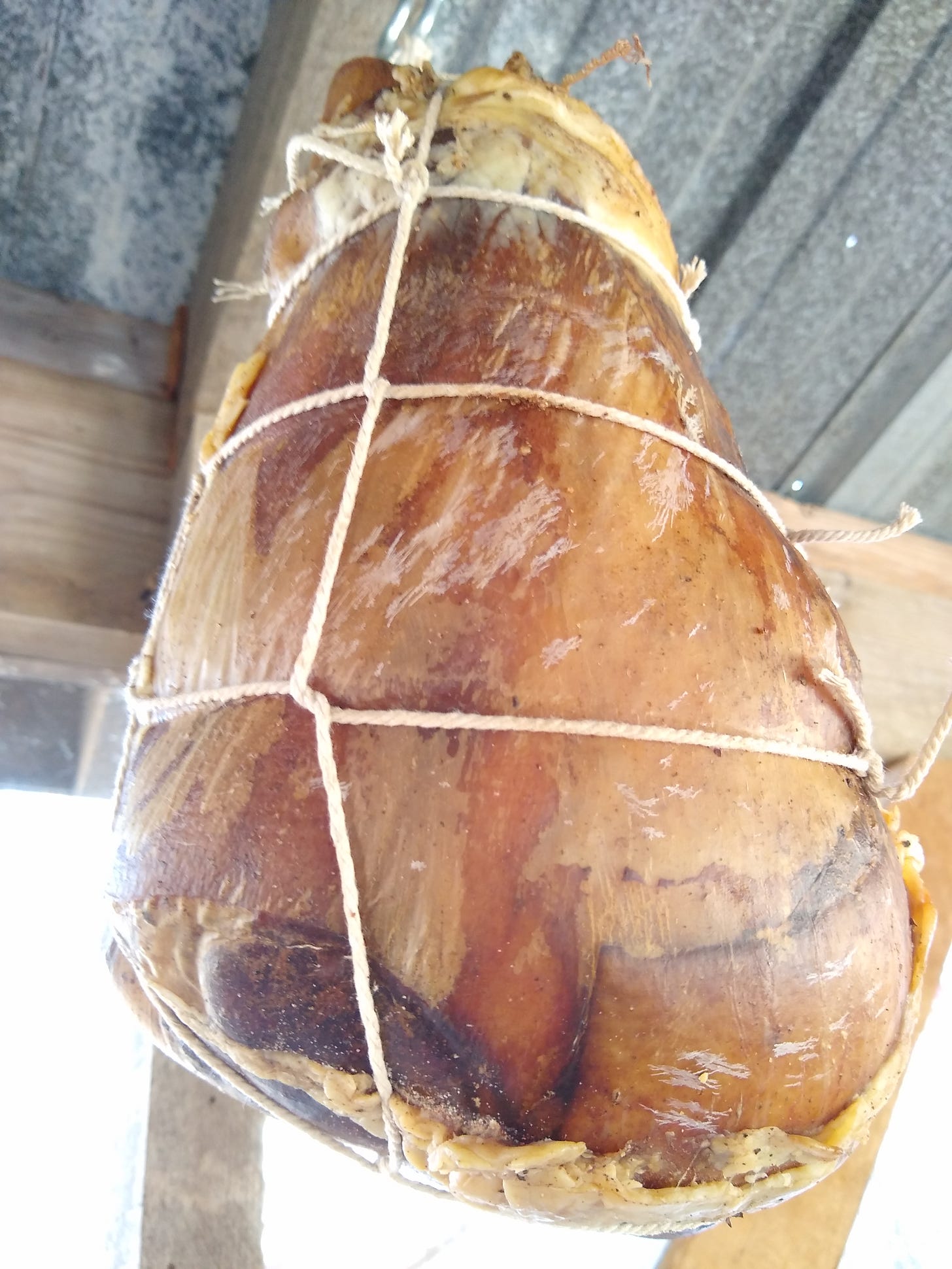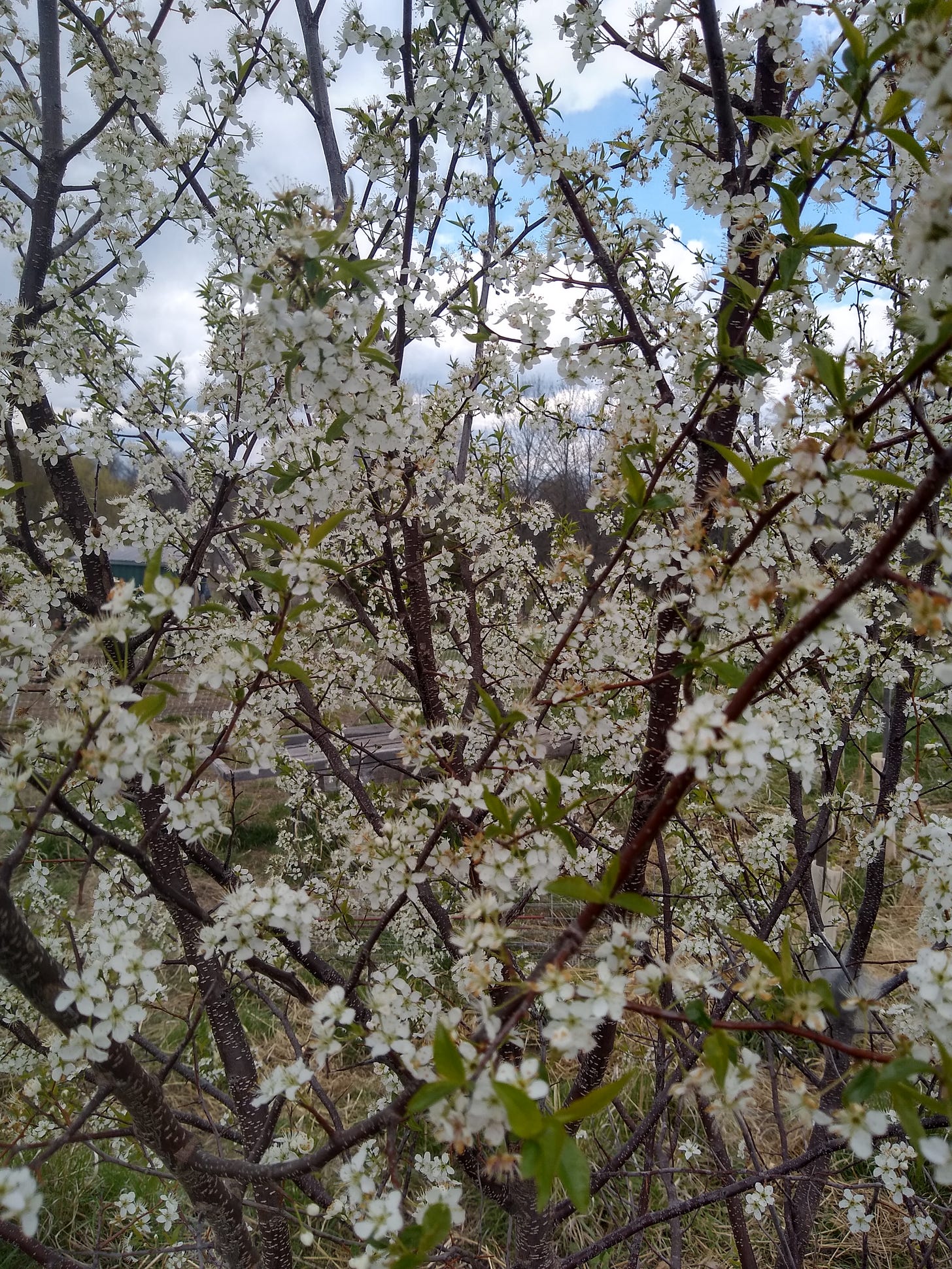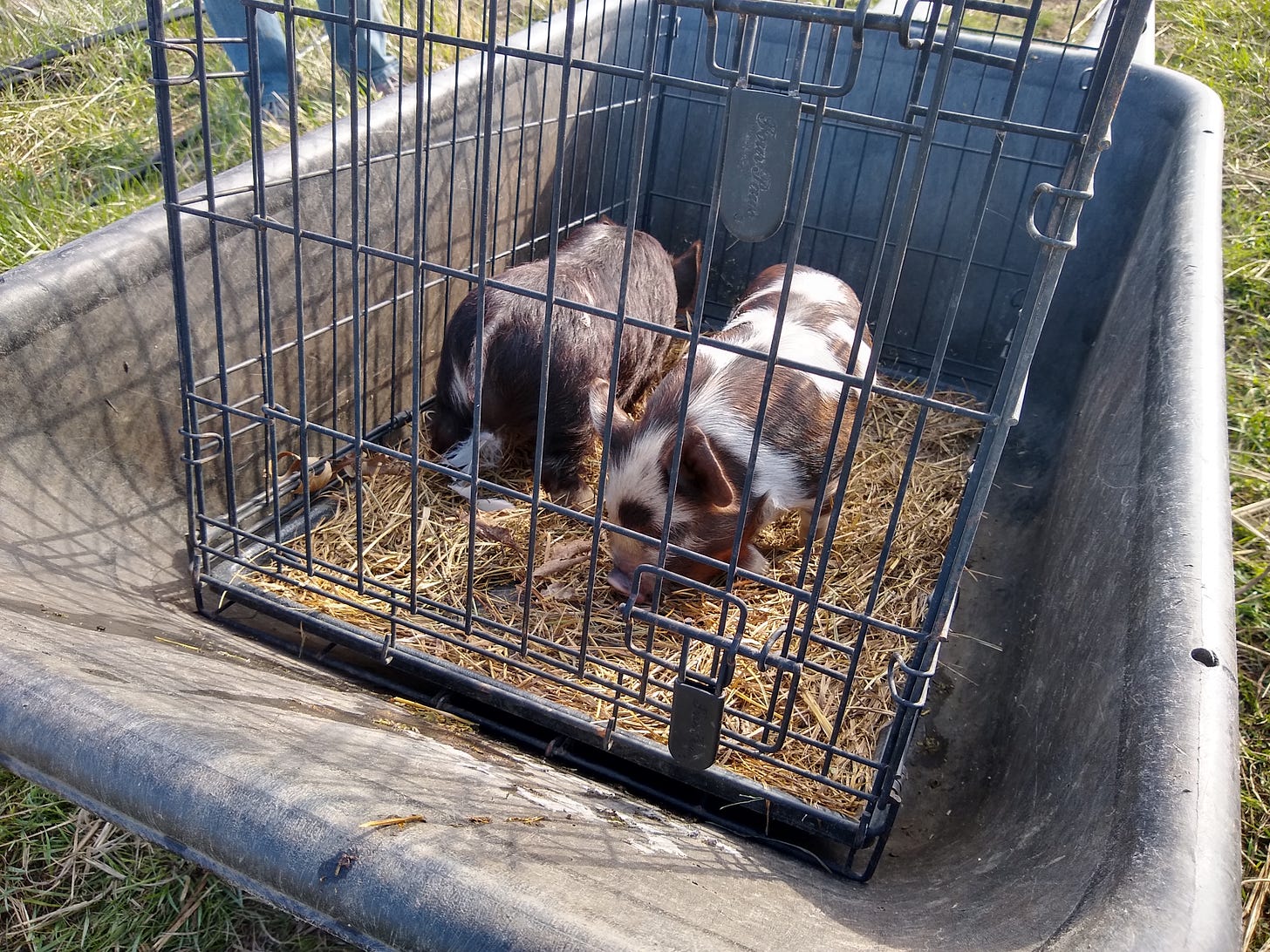Smygus-Dingus
Folk fertility rites, castration, tree intercourse and other harbingers of Spring.
Wishing a profuse and fecund Smigus-Dyngus to you all. I’m guessing that at least some of my readers are familiar with Smigus-Dyngus, or Dyngus Day as it is known here in the US among Polish Americans. But I should probably explain anyway. Undoubtedly, most of us are aware of the Roman Catholic church’s uncanny ability to co-opt Pagan holidays when they cannot be stamped out and then suck the fun out of them and somehow make them about sin and suffering. Well Dyngus Day is one of those Pagan holidays that the church couldn’t ruin, try as they did, and still do. And so, after the forty days of restraint, conservation, and deprivation known as Lent comes Smigus-Dyngus, a raunchy and raucous spring fertility rite, denoting the end of the late winter/early spring hunger gap and the renewal of growth upon the earth, an abundant farming season, and apparently enough, good and natural carnal lust.
First, a note on Lent. I suspect, or at least hope, that not all my readers were raised Catholic. Me, I’m baptized but unconfirmed, so I think that gives me the license to jab Catholicism whenever I want. I know many good people who are Catholics. Whether they are good people who happen to be Catholic, or are guided by their faith to be good people is probably irrelevant, but I’d wager on the former. Either way, while it really ain’t my thing, it’s poor form to let a few bad apples spoil the whole barrel, even if 90% of the apples are bad apples. To be fair, I feel this way about all forms of religion and superstition, not just Christianity in general, or Catholics specifically. What can I say? I am not saved, nor really interested in the eternal positioning of my soul, but I do hold an interest in earthly salvation. (i.e. in the face of climate change, mass extinction, and global human rights abuses.) That said, Lent very nearly appeals to me, frugal bastard that I am, or at least it makes a lot of sense from a subsistence agriculture perspective.
In the last days of winter and the early dawning of Spring, we must conserve what we have left. The larders are bereft of nutrition, the root clamps ungiving of sustenance, the smokehouse all but empty, save for an Easter ham, the herbs of the field hardly exist. And so, the past forty days are declared to be a time of fasting and restraint. It’s not as if the church could feed people. And so, we have a divinely directed period of asceticism, which I do believe has value in this modern era of overconsumption.
An aged easter ham.
But towards the end of Lent, here in a temperate climate at least, things begin to change. The pastures are resurrected, and can soon support grazing animals again. Rotund robins and greedy grackles descend from their roosts and flit about the giving soil for worms, seeds, and tidbits. No Lent for the wildlife, they are helping themselves to what they need. This year’s Easter Ham, once dead flesh, emerges from the smokehouse, each giving slice a sort of communion, the nourishing gift of a sacrifice we made for ourselves. He is risen, and boy, is he tasty. The nettles of the woodlot return to sustain our bodies, dandelion and yellow dock offer themselves in profusion to cleanse us of our winter stagnation, and the chirping landscape begins to sing in blossoms. Restraint, conservation, and deprivation have given way to fertility, abundance, activity, and most of all, sexy time.
So Smigus-Dyngus is a co-opted Polish Pagan fertility rite, and as such, it seems to be about carnal lust. It’s very big in Poland, but variations of the celebration occur throughout Central and Eastern Europe, with two key features present throughout: soaking, and whipping. Seems freaky enough to me. Now unfortunately, a traditional Smigus-Dyngus is very much a gendered celebration. Boys go about armed with great wooden pitchers and tankards of water and drench the girls. The girls considered to be prettiest are subjected to repeated drenchings throughout the day, sometimes being carried away to nearby bodies of water for a full-on dunking. Then comes the whipping. The boys are expected to gather some pussy willow switches and playfully whip the girls. However, the following day, the girls wield the willow switches and are allowed their revenge. I have not quite discovered where on the body these blows occur, the butt seems likely, but most of my research has led me to understand that the whipping is intended to be gentle. And that’s basically how Dyngus Day works. I don’t think I’m reading too much into it when I suggest that Smigus-Dyngus is not only a flirtatious celebration, it’s clearly about frequent, successful, and satisfying pollination. Of crops. In fact, it was considered raunchy enough to raise the ire of local parishes and governments on several occasions, admittedly, a low bar.
In 1410, the Bishop of Poznan, who must have been a real fun guy, wrote an edict entitled Dingus Prohibetur, imploring residents to not “pester or plague others in what is universally known as dingus.” As much of a killjoy as the bishop certainly was, he does make a point about consent, and I think that if we worked on that issue as well as some of the gender stuff, we could have a resurgence of the celebration.
A celebration of fertility is more or less a celebration of fornication, and one way or another, much of the world I live in is doing exactly that at the moment. Spring is a sexy time of year, with phallic shoots, yonnic flowers, and thick clouds of tree love in the air. Amorous drake ducks and randy roosters waddle and strut seductively, the nest boxes lined with viable, fertilized eggs. Quivering, pollen-laden honeybees penetrate the welcoming embrace of peach blossoms, and the hazels have deployed their reproductive structures, ornamented by small, delicate fuschia blooms and well-endowed, virile catkins. If your allergies are acting up, it may well be due to tree sex.
Wild Plum in bloom.
In some variations of Smigus-Dyngus, the boys not only perform the standard suggestive ritual drenching and whipping, but revel from home to home, crowing like roosters and demanding eggs. Eventually, one will climb onto a prominent rooftop, banging pots and pans and recite verse. Here’s my favorite example:
Your duck has told me
That you've baked a cake
Your hen has told me
She's laid you a basket and a half of eggs
Your sow has told me that you've killed her son
If not her son then her little daughter
Give me something if only a bit of her fat
Who will not be generous today
Let him not count on heaven.
In other traditions, one of the boy revelers is dressed up as a bear, replete with a bell on his head and a wild cloak of peavines. This is the bear of winter, demanding gifts from the households along his procession until he is taken to a body of water and ritually drowned, hence bringing spring back to the landscape for good.
These adopted fertility rites, like more mainstream seasonal customs, serve a function, and as long as they’re performed with consent, I suppose I am as fine with them as any springtime ritual. As recently as last week, I was still failing to completely leave my winter habits behind, of early bedtimes, time spent at rest near the warmth of the stove, and an uncanny ability to procrastinate. But now, with bluebirds on the outskirts of the chestnut orchard, bleating goats and bellowing cows straining to make there way to verdant pastures, and soft, warm, receptive soils eager to accept my seed, (not a metaphor, I’ve been regularly inseminating the garden with peas, lettuce, and turnips) the time has come to truly wipe the sleep from our eyes, shake the season of conservation and retraction from our bones, use our bodies to tend the earth, and drown the bear of winter, for a few months at least.
Dawn approaches, and my list grows long. The crowing cocks have left the roost and our cows have begun to position themselves for milking. The swine have begun to exhibit an almost adolescent exuberance, the weather is pleasant, they smell the growing grass, and they’re angling to make their way out on pasture for the day. We’ve begun running our goats out to day paddocks and returning them to the barn in the evening time, which arrives later each day. But there is a gray lining to this pleasant weather, and that is that it hasn’t rained much at all since last I wrote. While waterlogged spring soils can really hamper our work this time of year, the noticeably arid start to April is a bit foreboding, and so yesterday I spent time inspecting and repairing irrigation lines for our vegetable crops. A Dyngus Day drenching of our dry fields and gardens would be very welcome right now, or at least once I’ve finished adjusting the plastic on our hoophouse.
As far as how we’re using this beautiful Smigus-Dyngus here at Fox Holler Farmstead, it’s emasculation day for several goat kids and piglets. The practice of farm castration offers us a fine contrast to fertility rites. Whereas many folks, aided primarily by religion, do not see the importance of restraint in breeding in their own species, it is generally accepted that for livestock based agriculture, animal husbandry that is, to succeed, limits to conception must be maintained. And birth control on the farm is exclusively an activity relegated to the balls of male animals. And whereas a vasectomy is still a legal and relatively minor procedure that many penis bearing people in the affluent western world have access to, it only costs $4 per pair of balls for a vet to castrate in a more invasive, but nonetheless safe procedure. Perhaps somewhere in the world there is or was an example of a heathen folk rite centered on agricultural castration and male birth control. If not, we may have to invent one.
Don’t tell these little shoats, but they are in for a Dyngus Day suprise.
Spring is an easy enough time to make plans on the homestead, but some of those plans begin to fall apart come summer. Last year, I lacked the motivation to tend my gardens as much as I should have, and we had an unintentional Lenten period as a result. I hope to return to my work renewed and inspired, but I’m still learning the key principles in successful farming, namely good timing, patience, observation, and reasonable pacing. Learning when to expand my activities, or when to contract. When to sow seed, and when to hold it.
I don’t maintain or perform any particular fertility rites of my own, we just do the work, and it more or less ensures that we will receive a bountiful enough harvest. It seems to me that our agrarian forebears needed a way to grapple with the uncertainty of the weather and other natural cycles, and so ceremony and religion became necessary to petition higher powers and ensure their survival. Charming and quaint as folk fertility traditions may be, we, as modern farmers, have to reckon with climate disruption, and the only petition that will work is the one in which we collectively, as a mass culture, reduce greenhouse gas emissions, restore ecosystems, and sequester carbon. I don’t think this work has to be dreary, nor represent feelings of scarcity. I think we can revel in the work. It may not look quite like gangs of boys dressed as bears, terrorizing the community with pussy willow switches, but there may be modern equivalents that serve the basic function of returning to motivation and preparing to steward conception, growth, and abundance in our farming practices.
Drenched, flogged and eager,
BB





